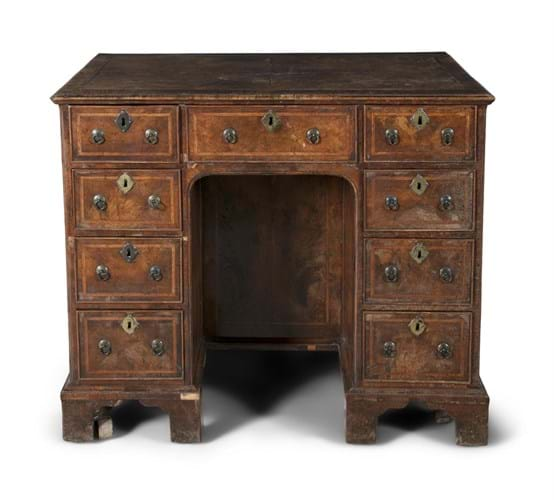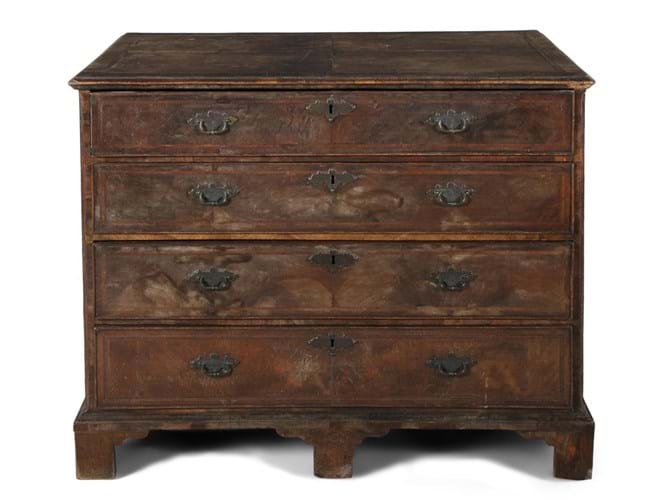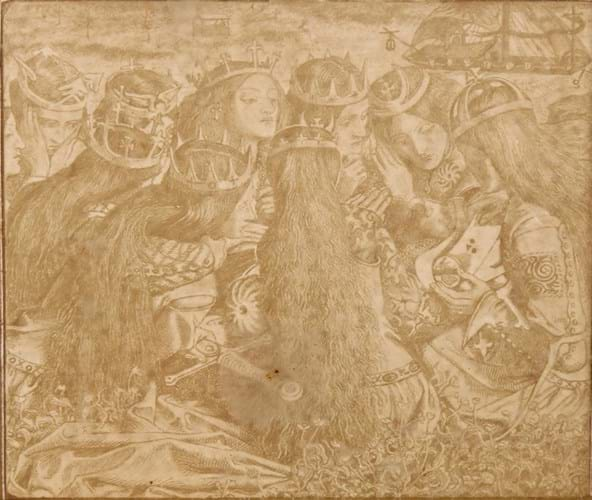1. George I walnut desk – €13,000
The chest of drawers and the kneehole desk are both classic forms of early Georgian walnut furniture. However, rarely are they seen on the same piece.
Seven bidders chased the unusual combination chest and desk offered for sale at Adam’s in Dublin on December 19. Made to sit in the centre of a room with a knee-hole to one side and a four-drawer chest to the other, it measured 3ft 1in (93cm) wide by 2ft (60cm) deep.
Rarity was in its favour but so too was its honest condition. Despite the need for full restoration to splits, water stains and missing veneer, the handles and locks all appeared to be original and unreplaced.
Estimated at €1000-2000, it took €13,000.
2. Gilt metal coach watch – £5500
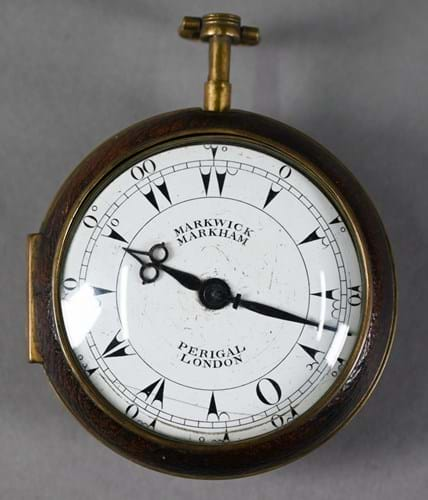
Gilt metal coach watch made for the Ottoman market signed Markwick Markham and Perigal – £5500 at Andrew Smith & Sons.
The names of Markwick and Markham appear on the dials of a number of English-made clocks and watches produced for the Turkish market. However, it seems not all were made under what was a short partnership between James Markwick and Robert Markham, two freeman of the Clockmakers Company, who did business together in the 1720s.
Writing in A View of the Commerce of Greece published in 1800, Felix de Beaujour explains why the name had persisted. “Markwick Markham are fictitious names,” he says. “It is an old extinct clock manufactory whose name some London makers borrowed lest the Turks should be startled by new names.”
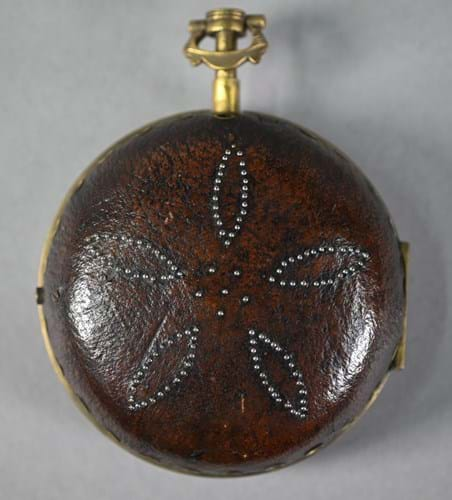
Gilt metal coach watch made for the Ottoman market signed Markwick Markham and Perigal – £5500 at Andrew Smith & Sons.
Typically on these clocks and watches, the name Markwick and Markham appears next to that of the real maker. In the case of a pair-cased coach or goliath pocket watch offered by Andrew Smith & Sons in Alresford, Winchester on December 13 that was Perigal London, probably for Francis Perigal III (1742-1817) whose family had a shop in the Royal Exchange.
The watch, measuring almost 4in (10cm) across, has a gilded full plate verge movement with four hammers for strike and repeat on a single bell. Numbered 15390, it is housed in an outer case of leather studded with silver pins.
These are always popular entries and, in generally good condition, this one sold at £5500 (estimate £500-700).
3. Dante Gabriel Rossetti engraving – £4200
The sale at Burstow & Hewett in Battle, Hastings on December 15 included this wood engraving by Dante Gabriel Rossetti (1828-82). It was not properly identified in the catalogue but the 8 x 10cm print, signed with a monogram bottom right, was first produced for the illustrated edition of Tennyson poetry that was published by Edward Moxon with the input of members of the Pre-Raphaelite Brotherhood in 1857.
Variously titled Mythic Uther’s Deeply Wounded Son or King Arthur and the Weeping Queens, this is one of two illustrations Rossetti created for the poem The Palace of Art. It illustrates the passage reading: ‘Mythic Uther’s deeply-wounded son, In some fair space of sloping greens, Lay, dozing in the vale of Avalon, And watch’d by weeping queen.’
Adopting an unusual composition, locks of woven hair and the handle of Excalibur appear in the foreground. In the background is a sailing ship and a tomb with a sarcophagus ready for the king’s body.
The original drawing in the Birmingham Museum and Art Gallery shows the scene reversed – an image also known through an early photographic print that was sold at the time by Mansell’s of Oxford Street.
The engravings were printed twice – in 1857 and then posthumously in 1903.
This Hastings engraving, that appears to be from the original issue, was guided at just £50-70, but made £4200.
4. 17th century portrait of Philip IV – €47,000
Philip IV (1605-65) was king of Spain (1621-65) and Portugal (1621-40) during the marked decline of Spain as a great world power. Famously he was painted repeatedly across 30 years by Diego Velazquez (1599-1660) in a series of portraits that involved a political element.
The absence of swagger and badges of royalty reflected the reformist intentions of the monarch and his court. However, despite the narrow chromatic range and relatively sober clothing, the sitter with his prominent Habsburg lips and chin was instantly recognisable.
A surprise bidding contest emerged at Babuino Casa D'Aste in Rome on December 14 for this 17th century portrait of the king. The 70 x 56cm oil on canvas in a giltwood frame, consigned by a Rome family, shows the monarch in his youthful 20s wearing armour and a white ruff akin to the portrait by Velazquez dated c.1626-28 in the Prado, Madrid.
More than one admirer believed they had seen something more than a pedestrian copy under areas of late 19th century restoration and overpainting. Estimated at €2500-3500, it sold to a buyer via thesaleroom.com at €47,000 (£40,340).
5. Sylvia Plath presentation copy – £11,500
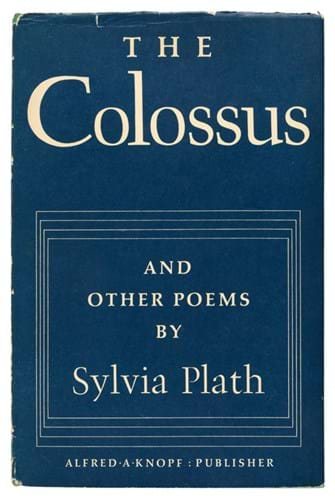
Presentation copy of the first American edition of Sylvia Plath’s The Colossus – £11,500 at Dominic Winter.
The sale at Dominic Winter in South Cerney on December 14 was topped by two presentation first editions by Sylvia Plath. They came for sale from the family of Susan O'Neill-Roe, a qualified children's nurse who worked as a childminder for a recently separated Plath in North Tawton, Devon during the autumn of 1962.
At a time of fragile mental health but also a rich upsurge in poetic inspiration, Plath found O'Neill-Roe and her family an important source of practical and emotional support.
A first American edition copy of The Colossus is inscribed simply ‘For Susan & Alan & Nancy with warmest good wishes & gladness you are who you are & where you are’. Alan and Nancy Jenkins were Susan’s mother and stepfather – this copy given to them in late November.
It was estimated at £2000-3000 but sold at £11,500.
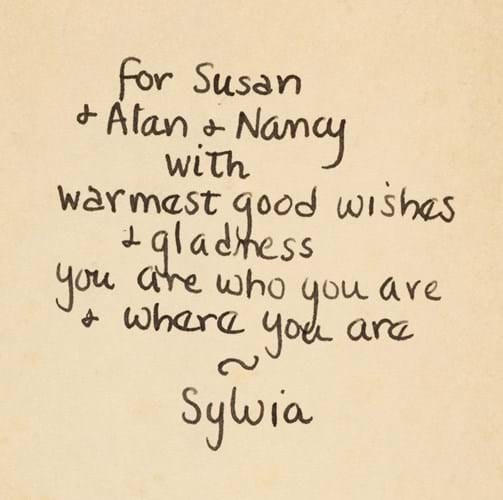
The inscription by Sylvia Plath to the first American edition of The Colossus sold at Dominic Winter.
A 1963 first edition copy of The Bell Jar had a similar provenance. Carrying the ownership initials of the writer Alan Jenkins, it was sold together with two letters written from Susan O'Neill-Roe dated January 16, 1963 and February 15, 1963 in which she discusses Plath’s suicide and a meeting with Ted Hughes when she was given the book as a gift.
“I just can't believe that Sylvia's killed herself – it just doesn't feel real – I went round there yesterday morning. Poor Ted was very dazed & hardly knew what had hit him... Have you seen the reviews of her book The Bell Jar – Ted gave me a copy of it”. Such an emotive copy of Plath’s final novel brought £13,000.


